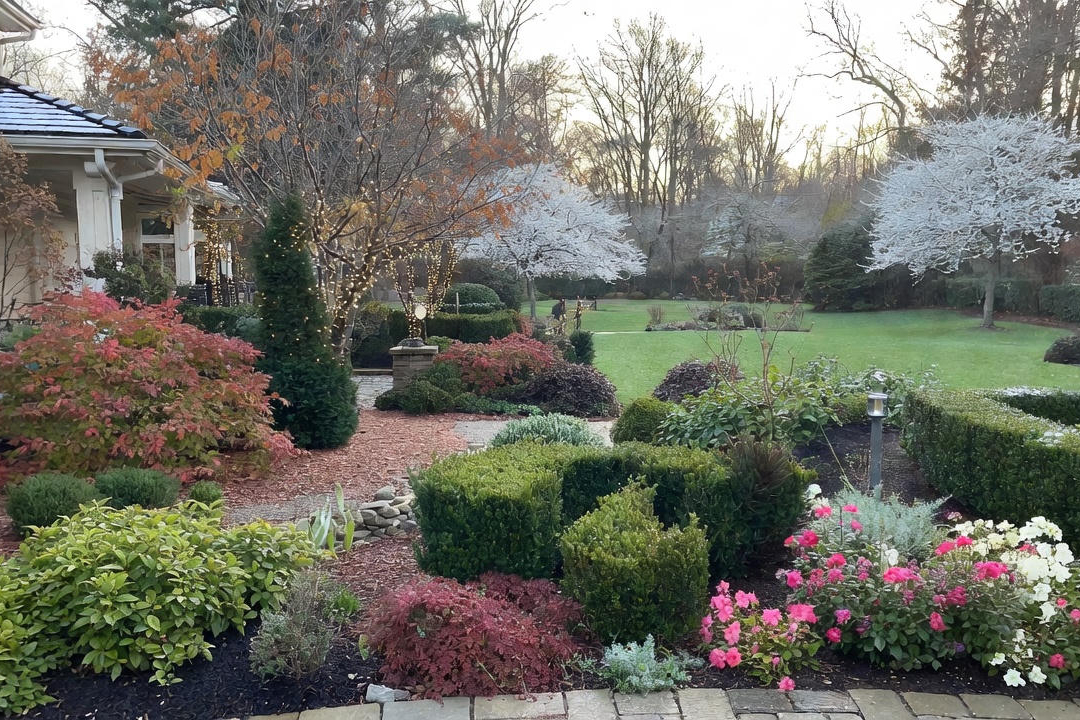
Making your lawn more sustainable can be a challenge, especially if you want it to be able to hold water more efficiently. The first thing you can do is apply compost as topdressing to your existing grass once per season. Manure compost is excellent for this process and it gives your lawn an organic nitrogen boost. Rake compost into grass evenly to about a quarter inch. Consider thickening your existing grass at this time as the compost helps hold grass seed in place.
If you use drought tolerant grass, your watering requirements will be significantly less. However, you should practice good watering techniques as well. Lawns hold more water when watered before 10:00 AM and after 6:00 PM. When watering during the main part of the day, the evaporation percentage for the water goes up significantly; meaning you are wasting water when you water mid-day.
Traditional grass needs an inch of water every week. It is better to water your grass once or twice per week heavily, rather than water every day shallowly. This technique forces roots to go deeper for the water and helps to build a stronger root system for your lawn. Watering more than one inch of water per week is wasteful as one inch per week should be keeping your grass green throughout the season.
Mowing

Each time you mow you should not remove more than 1/3 to ½ of the tops off the grass. In fact, mowing grass three inches high is effective in suppressing weeds and crabgrass and helps the grass look greener. Weeds are often shaded out by the taller grass. When you cut too tightly to the soil, thatch and roots are sometimes exposed, causing additional complications with growth. Spring’s first mow is the only exception to the three-inch rule. Cut the grass down below two inches on the first mow of the season to help cut off the winter dead tips.
Mulching mowers are best because they leave the tops of the grass on your lawn and save you money on fertilizer. These clipped grass pieces decompose and contribute valuable organic matter to your soil. This technique adds two pounds of nitrogen per 1,000 square feet each growth season. Keep your mower blades sharp to prevent frayed ends and keep in mind that many say that lawn thatch is caused by grass clippings. This is not true. Too much lawn thatch is caused by over fertilization. Lawn thatch is the dead grass and root tissue which resides between the soil surface and the green part of the grass plant. When thatch gets thick it blocks water, air, and nutrients from reaching the roots and provides a spot for insects and disease to nest.
Fertilizing

Over feeding your lawn is both bad for your lawn and bad for the environment. Too much nitrogen and phosphorus can harm the local water systems and excess nutrients can kill grass and plants in surrounding beds as well as cause lawn thatch. Do not over fertilize your lawn. Instead, better understand your soil test results, and apply only what your soil requires. Your soil ingredient composition is key to the supplements you add to make your grass grow successfully.
Organic fertilizers are always the choice for a safe and healthy lawn. Once you thoroughly understand what amendments your soil needs, add organic fertilizer as label instructions guide you. It is always better to apply a lower dose, rather than over-doing it.
Disease Control and Lawn Repair

Disease problems happen when your lawn becomes stressed. Over fertilization, heavy thatch levels, and compacted soil are several reasons your lawn can be stressed. Minor accumulations of thatch can be controlled by power raking, but to repair an extremely heavy thatch problem, core-aerify the lawn at a rate of thirty-six holes per square foot to reduce compaction, then spray an all-natural thatch control product on the lawn. Apply according to package directions.
Lawn diseases like brown patch, pythium blight, brown spot, necrotic ringspot, dollar spot, and rust are harmful fungi that can destroy a lawn if left untreated. These problems can be repaired in several steps. Practice smart water techniques; watering in the morning so that the grass has time to dry out before evening, mow frequently to prevent rust from maturing.
Building a healthy lawn at the beginning of spring will help prevent diseases later in the season. A mixture of natural soil amendments and compost is an effective organic solution to building a healthier lawn and landscape.
Download iScape now and discover smart ways to place a thick beautiful lawn in your landscape. iScape it!




ds.jpg)
.jpg)
